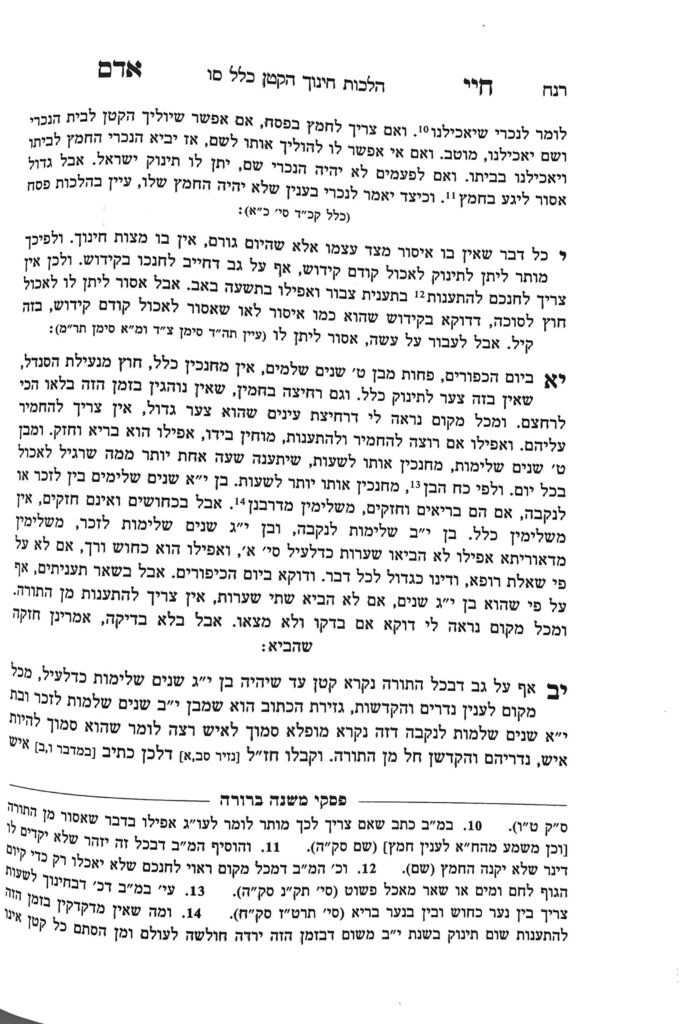We are continuing in siman 10. The Chayei Adam had introduced the idea that when an issur is not intrinsic, but due to an external time limitation, one is allowed to perform sefiya b’yadayim to a child.
This feeds into the idea that part of the reason beis din is obligated to ensure a katan is separated from issur is because there is something abominable about the item. When there is nothing particularly abominable about the item per se, they are not obligated to separate him. (This idea cannot be the full understanding behind beis din’s responsibilities, but it is certainly a component.)
Some argue on the Chayei Adam, and understand that it is only muttar to perform an issur with an external time limitation for a katan in cases of food, because it is a strong need for the child. However, it would not apply to non-food items. The understanding behind this opinion is that even though it may not be a sakana per se, since the child requires food for their development, and there is nothing wrong with the food intrinsically, Chazal permit sefiya b’yadayim. However, in other situations there would be an issur of sefiya b’yadayim.
On the other extreme, the Shulchan Aruch Harav points out that since we understand there is a difference between intrinsic issur and an external time limitation, it is muttar to perform sefiya b’yadayim to a katan with chometz on pesach, because the chometz is only assur due to the external time limitation of the holiday. We see that the Chayei Adam clearly does not hold of this opinion, because he only mentioned a heter for chametz regarding a child who is a choleh (see shiur 1297). Similarly, we have learned that one cannot perform sefiya b’yadayim with a katan for a melacha on shabbos, even though it is also dependent on an external time limitation (shabbos). Thus, we see that this concept of an external time limitation allowing for sefiya b’yadayim has its limits, and is not applied in all situations.
In siman 11, the Chayei Adam discusses a katan on Yom Kippur. The Chayei Adam writes that a child under the age of nine should eat and drink normally, and there is not yet a concept of chinuch regarding Yom Kippur at all. We do enforce the issur of leather shoes, because there is no difficulty for the child in that regard. The Gemara states that washing a child regularly with hot water and anointing them was part of the child’s growth. However, the Chayei Adam points out that this is no longer true, and therefore it is assur to wash them with hot water, even if the water was warmed before Yom Kippur. However, the Chayei Adam allows a child to wash out their eyes as they would regularly.
The Chayei Adam writes that even if a child wants to fast, if they are under age nine, we insist that they stop.
Once a child is above age nine, we perform chinuch l’shaos; meaning, we try to push off their meals by an hour. The more a child can wait, the more they may fast.
We will continue with these halachos in the next shiur, be’ezras Hashem.
Summary
- There is no chiyuv chinuch on a lo saasei when there is nothing intrinsically wrong with the item. However, there is still a chiyuv chinuch on mitzvos asei.
- Until the age of nine, a katan is discouraged from observing the issurim of Yom Kippur, except for leather shoes, anointing, and washing. However, they may wash their eyes
- From age nine, we perform chinuch l’shaos.



